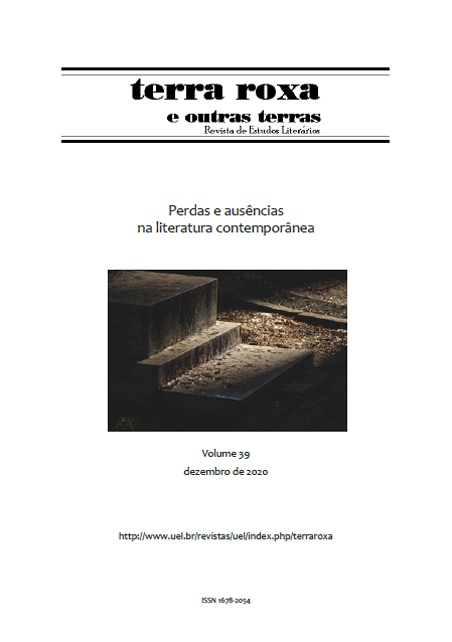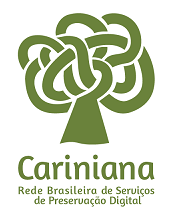Childhood grief and the process of resignifing life: maria's path in Corda bamba, by Lygia Bojunga
DOI:
https://doi.org/10.5433/1678-2054.2020v39p131Keywords:
Lygia Bojunga, Death, Grief, Children's literatureAbstract
Often taken as taboo by parents, educators, and reading mediators, themes of death and grief are not avoided by recent literary production. Veiling conversations and artistic productions dealing with finite life can harm the process of symbolization necessary to shape children's identity, their understanding of finite life, and thus its appreciation. We analyzed Lygia Bojunga's novel Corda Bamba, especially the aspects concerning the main character's mourning, maturation, and self-discovery processes. After losing her parents in a tragic circus accident, the 10-year-old girl lost all her memories as well. During her metaphorical journey through colored doors in a long corridor, she relives stories she heard about her parents, and the moments she spent with them. Along this path, she is able to elaborate her loss, and find new meanings for her existence, creating new relations with her memories, her lost ones, and starting to cope with her new situation. The analysis was based on death and grief studies, theory and criticism of children's and juvenile literature, and literary analyses of Bojunga's work.Downloads
References
ARIÉS, Philippe. História social da criança e da família. Trad. Dora Flaksman. 2ª. ed. Rio de Janeiro: LTC, 1981.
BOJUNGA, Lygia. Corda bamba. 25ª. ed. Rio de Janeiro: Casa Lygia Bojunga, 2018.
BUTLER, Judith. Vida precária: os poderes do luto e da violência. Trad. Andreas Lieber. Belo Horizonte: Autêntica, 2019.
DARNTON, Robert. Histórias que os camponeses contam: o significado de Mamãe Ganso. O grande massacre de gatos: e outros episódios da História Cultural Francesa. Trad. Sonia Coutinho. 2ª. ed. Rio de Janeiro: Graal, 1986. 21-101.
FRANÇA, Lisa. As vias simbólicas para combater o mal-estar na infância e na adolescência. Vera Teixeira de Aguiar; João Luís Ceccantini; Alice Áurea Penteado Martha, orgs. Heróis contra a parede: estudos de literatura infantil e juvenil. São Paulo: Cultura Acadêmica, 2010. 11-21.
FREITAS, Joanneliese de Lucas. Luto e fenomenologia: uma proposta compreensiva. Phenomenological Studies - Revista da Abordagem Gestáltica, v. 19, n. 1, p. 97-105, 2013. http://pepsic.bvsalud.org/pdf/rag/v19n1/v19n1a13.pdf
PAIVA, Lucélia Elizabeth. A arte de falar da morte para crianças: a literatura infantil como recurso para abordar a morte com crianças e educadores. Aparecida: Ideias & Letras, 2011.
SILVA, Rosa Maria Graciotto. Entre o medo e a morte: a construção da personagem criança em Lygia Bojunga. Vera Teixeira de Aguiar; João Luís Ceccantini; Alice Áurea Penteado Martha, orgs. Heróis contra a parede: estudos de literatura infantil e juvenil. São Paulo: Cultura Acadêmica, 2010. 73-98.
VALVERDE, Juliana. Mindinho maior de todos. Ilustração de Feres Khoury. São Paulo: Ôzé, 2017.
ZILBERMAN, Regina; Ligia Cademartori Magalhães. Literatura Infantil: Autoritarismo e Emancipação. São Paulo: Ática, 1987.
Downloads
Published
How to Cite
Issue
Section
License
Copyright (c) 2020 Terra Roxa e Outras Terras: Revista de Estudos Literários

This work is licensed under a Creative Commons Attribution 4.0 International License.
Authors who publish in this journal agree to the following terms:
a) The authors retain the copyright and grant the journal the right of first publication, the work being simultaneously licensed under the Creative Commons Attribution-NonCommercial 4.0 International License, allowing the sharing of the work with acknowledgment of the authorship of the work and initial publication in this journal.
b) Authors are authorized to assume additional contracts separately, for non-exclusive distribution of the version of the work published in this journal (eg, publish in an institutional repository or as a book chapter), with acknowledgment of authorship and initial publication in this journal.
c) Authors are allowed and encouraged to publish and distribute their work online (e.g. in institutional repositories or on their personal page) after the editorial process, as this can generate productive changes as well as increase impact and citation of the published work (See The Effect of Open Access).
d) The authors of the approved works authorize the journal to, after publication, transfer their content for reproduction in content indexers, virtual libraries and the like.
e) The authors assume that the texts submitted for publication are of their original creation, taking full responsibility for their content in case of any objection by third parties.




















